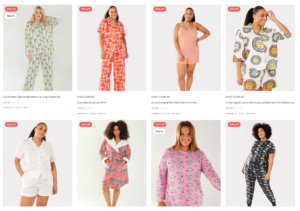By Jeremy Bauer, General Manager of Embelex, Avery Dennison
It’s almost 30 years since the Premier League introduced squad numbers and names on players’ backs. Since then, the technology behind replica shirts has come a long way.
Today, every team in England’s top tier wear shirts that are digitally-connected. Fans buying replicas need only scan the name, number or Premier League lion logo with their smartphone to connect to exclusive ‘hidden’ content online and be in with a chance of winning prizes, such as the Premier League’s Hall of Fame shirt, a popular competition which ran last season.
In fact, the supply of digitally-printed, laser-cut graphics to embellish sports apparel for teams, leagues, and retailers is becoming big business. And it can open up a world of marketing opportunities for any fashion brand selling garments and accessories online. If done well, this kind of digital marketing through physical products can stimulate rich customer engagement, potentially leading to increased spend, better retention rates and knock-on benefits, such as shared stories and images on social media and driving traffic to your site.
With over six billion smartphones users worldwide, the opportunity for brands to engage with consumers is greater than ever. Sports teams and emerging fashion brands can capitalise on this landscape by providing personalised experiences which allow people to interact with the brand on a deeper level. One research study found that consumers are 80% more likely to purchase a product or service if a brand offers personalised experiences. This presents an exciting opportunity, one that ecommerce marketers can’t ignore.
Digitally connected numbers and logos
Many fashion and sportwear brands want to offer differentiated SKUs to stay relevant and competitive in today’s crowded apparel market.
The digitisation of sports branding illustrates what is possible. The digital triggers in garments are there to enrich the user-experience by bringing people closer to the teams they love. A good example is online publication SoccerBible working with sports charity Common Goal to design and produce jerseys featuring a digitally-scannable heat-applied QR code on the inside neck. This directs consumers to a “Thank you” message from Common Goal co-founder and ex-Manchester United player, Juan Mata.
Social media also plays a core role in these kinds of campaigns, as platforms provide a space where fans at home can join in the fun and share their experiences with others through images, videos, live chats and more. With TikTok sponsoring the Women’s Euros 2022, we can see just how strong the ties between sports and social media have become.

Physical and digital merge with IoT
So how does the technology work? The use of emerging digital triggers like QR codes is on the rise and it’s surprisingly easy today to put messages in garments – via digitally connected embellishments. These tools can connect garments with whichever brand or cultural movement your customers are into. For instance, scanning a heat transfer logo or badge on a T-shirt with a smartphone will open an affiliated app, leading to exclusive content, loyalty promotions and more.
Young Western consumers are more than comfortable scanning with their phones. A report by Insider intelligence predicts that the number of smartphone users in the US who scan a QR code at least once a year will rise from 83.4 million in 2022 to 99.5 million in 2025.
And of course, incentives will encourage participation. Sports fans, like all consumers, are incentivised by rewards and special offers. According to a recent report by Cheetah Digital, 50% of fans are happy to trade their data for incentives like coupons or exclusive access through digital interactions. No wonder sports merchandise sellers are starting to provide products, services and experiences that are customised via emerging technological solutions.
Ecommerce brands need a point of difference
There is huge potential for retailers to use digital triggers on garments to link customers directly back to online content, where they can find more products, services, special offers and even personalised marketing comms.
Digital triggers also have applications in supply chains where they can help to track the lifecycles of products. Embedded scannable triggers can, for example, give consumers access to vital information about product care and recycling. Using digital triggers in place of tags that are sometimes removed as products move through different regions means this information is better protected.
What’s more, by digitally enabling experiences, information and opportunities can be created with less physical waste and carbon emissions. With this new technology, we can even begin to view labels and heat transfers as portals to educational resources that review topics like the quantity of waste saved or locally sourced materials further supporting retailers’ ESG goals. Most ecommerce players today are looking at ways to drive savings and sustainability through traceability.
Smart features in clothing can also help with brand authentication and protection, as retailers battle to beat fake fashion and protect their brand equity. For instance, QR codes can direct customers to URLs owned by brands or online retailers, legitimising products and providing further assurances.
Industry experts predict that post-Covid, with so much more consumer interaction taking place online, now is the time to offer customers the chance to connect through their hoodie, bag or bucket hat, with ease, speed and at low cost. Reimagining apparel as an ‘interactive creative canvas’ unlocks a range of imaginative possibilities and use cases.
The technology is here, presenting ecommerce brands with endless opportunities to experiment with human-centric engagement and entertainment.












